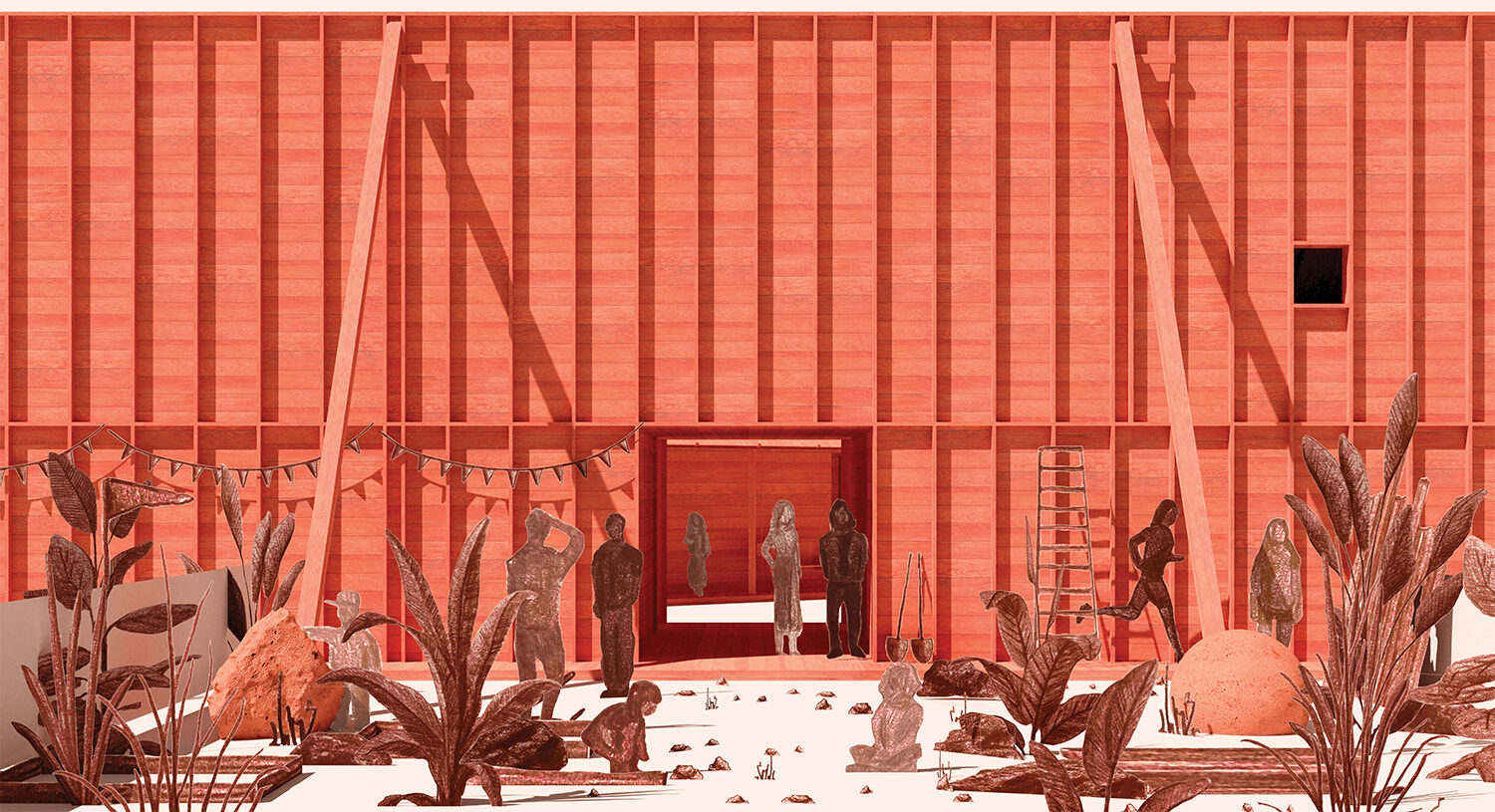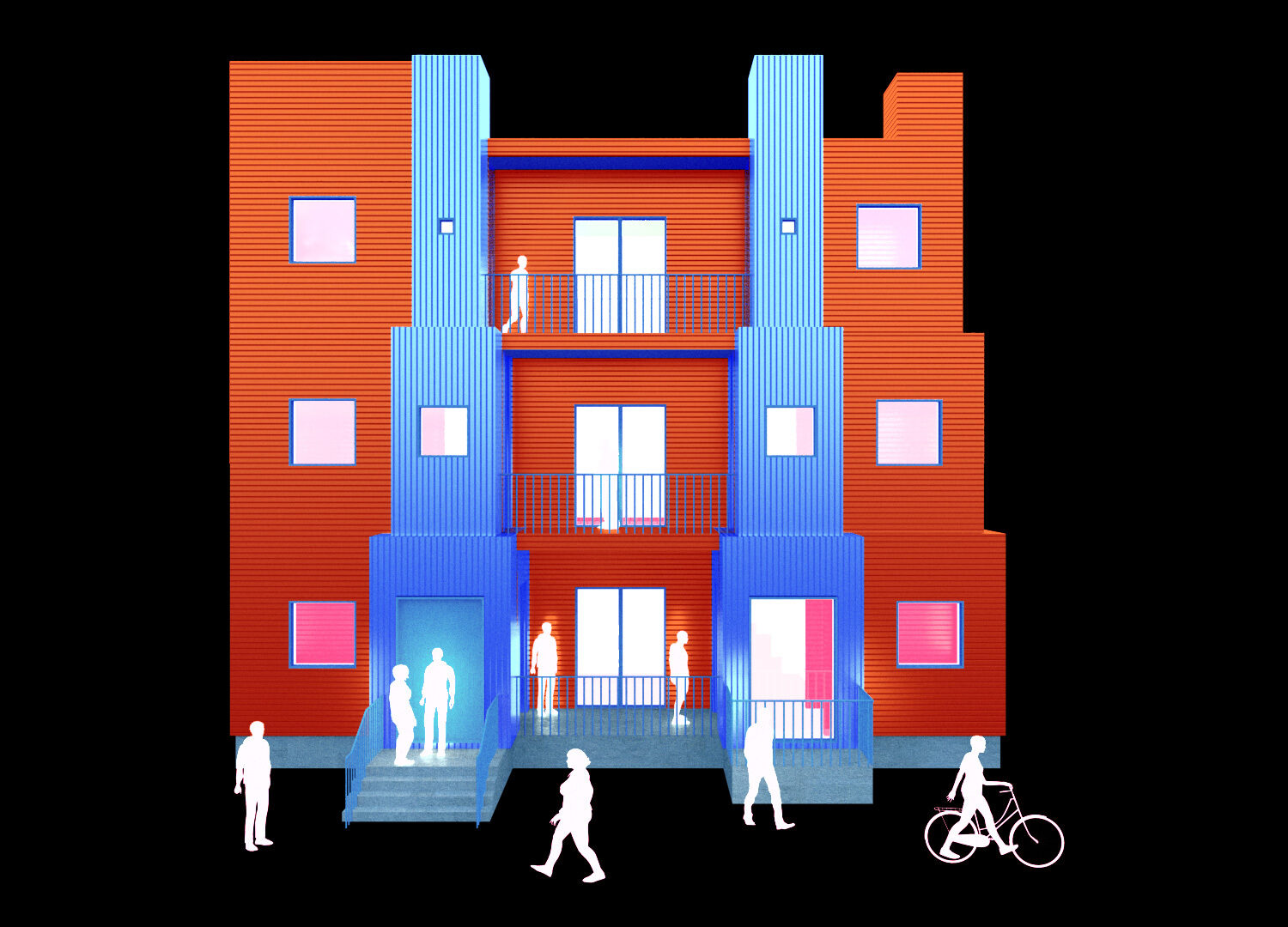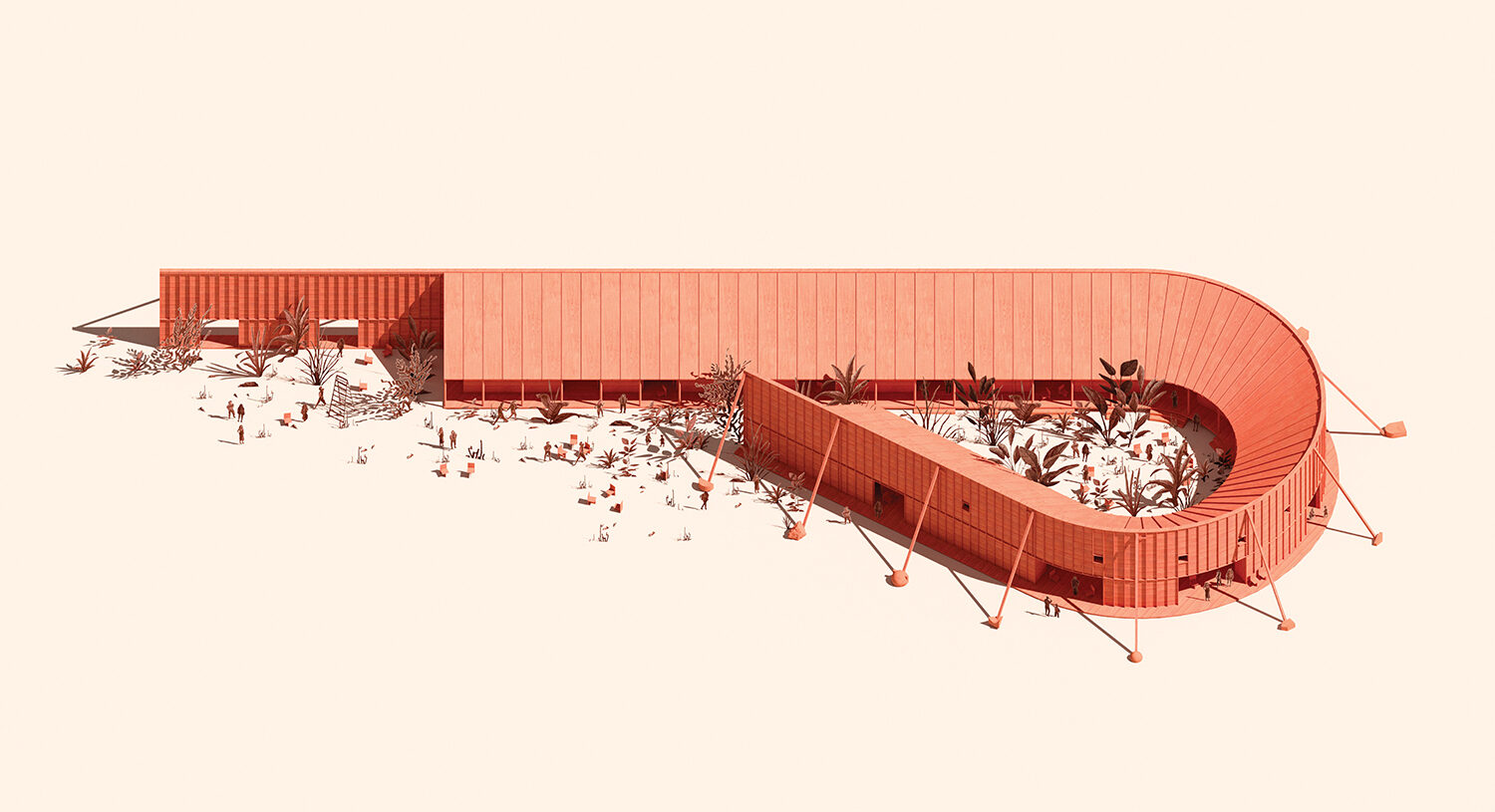Rotch Travelling Scholarship 2022 Finalists
As a well-known author, activist, professor, and scholar who was an advocate for Black feminism, bell hooks wrote over 40 books and many scholarly works and lectures over her lifetime. Her work examined American society with a critical lens and a particular focus on intersectionality as a framework to look and think critically about race, gender, class, sexuality, space, patriarchy, capitalism, and white supremacy. In each exploration, her work unearthed how these systems are deeply intertwined and inseparable from each other.

Please use the following pages to explore the competition challenge and the submissions from the finalists below.

Commoning the Triple / Stack and Void
This brief calls for a thoughtful entanglement between long and short-term forms of living, encompassing the design of the bell hooks creative residency within the Dorchester Neighborhood of Boston. In light of her recent passing, The Boston Public Library would like to construct a residency in hook’s honor. The Residence will serve as a space by which creatives and critical thinkers can engage their work within the context of a historically black neighborhood. As such, one must articulate how you fit an institution within the scale of a house?
View the full competition brief.
Ian Miley (2022 runner-up)

Commoning the Forum
On a small triangular block in the heart of Dorchester, between two converging grids, opens up an exceptional urban interior, uncommon to a residential block in Boston. This excess of yardage at the shared interior has fostered a culture of community and conversation within the block in keeping with Bostonian ideals of the commons. The Community Land Trust has tasked finalists with designing a new forum commons for the bell hooks institute, an inclusive space which facilitates forms of gathering, discourse, and engagement. Each program is characterized by a primary space and an associated back-of-house.
Eating is in dialogue with its kitchen, performing with its backstage, and conversing with its offices. Each program provides an opportunity to re-imagine typical notions of visibility, labor, community, and engagement, as well as an opportunity to redefine how eating, performing, and conversing occur.
View the full competition brief.
William Smith (2022 winner)
Ian Miley (2022 runner-up)
About the Rotch Travelling Scholarship
FOUNDING
Founded in 1883 in honor of Benjamin Smith Rotch, the Rotch Travelling Scholarship is the oldest of its kind in the United States and its influence has been felt throughout the entire profession. The roster of Rotch Scholars includes many of the country’s most distinguished architects: Henry Bacon, Ralph Walker, Wallace Harrison, Louis Skidmore, Edward D. Stone, Gordon Bunshaft, Victor Lundy and many others.
Benjamin Smith Rotch of Milton, Massachusetts studied painting in Paris in 1847 and cultivated an early appreciation for the value of foreign travel in stimulating young architects’ imagination through contact with great buildings of the past. One of his sons, Arthur Rotch, studied architecture at the Ecole des Beaux Arts in Paris from 1874 to 1879 and further cemented this belief, as well as the Rotchs’ active patronage to fellow artists.
Upon the senior Rotch’s death in 1882, Arthur and his siblings—Abbot Lawrence, Edith, Aimee (Mrs. Winthrop Sargent) and Annie Lawrence (Mrs. Horatio Appleton Lamb)—established the Rotch Travelling Scholarship on October 1, 1883.
In 2002, the Rotch Trustees expanded upon the mission of architectural education through foreign travel with the establishment of the Rotch Travelling Studio grant.
ENDOWMENT
When the Rotch family executed an indenture of trust on December 29, 1883 for “the advancement of education in architecture,” the stipend was set at $1,000 per year for two years of travel abroad. In 1912, the stipend amount began to increase gradually until 1936, when the Rotch Trustees and Scholarship Committee substantially increased the sum and reduced the required travel time. Today, the Rotch Scholar receives $38,500 or more for at least six months of travel.
HISTORY
In 1980, the Rotch Trustees requested that the Boston Society of Architects appoint a Rotch Scholarship Committee to advise and “develop a scheme of examinations.”
From the start, applicants were expected to be proficient in a variety of topics, including knowledge of architectural history, construction, French and drawings from the cast. In 1892, a two-stage system of design examinations was established. The preliminary jury would select several drawings that displayed evidence of “architectural potential” from which the final jury would select the Rotch Scholar. In 1959, the Rotch Scholarship Committee moved from this type of preliminary competition toward a “search for imaginative capacity” in future Rotch Scholars. Today, that search is conducted through a two-stage design competition.
